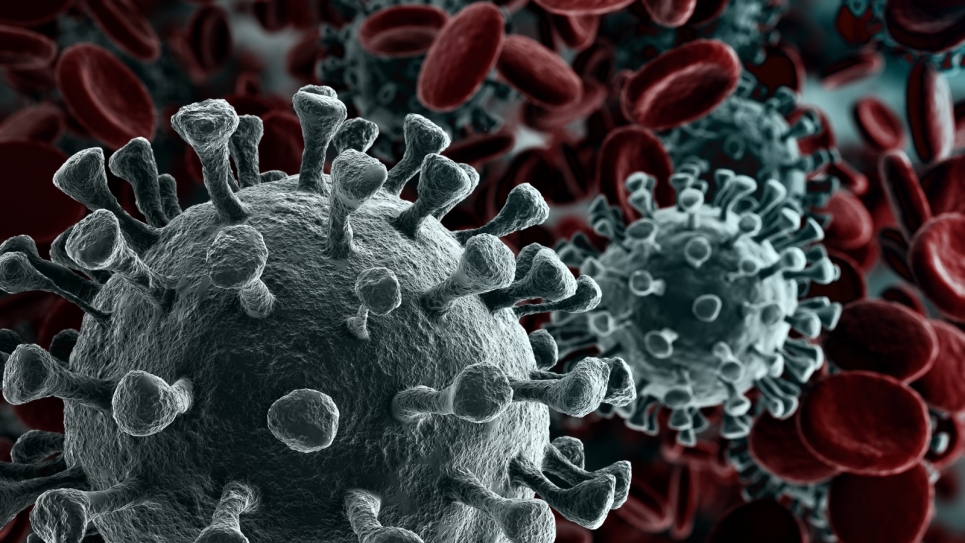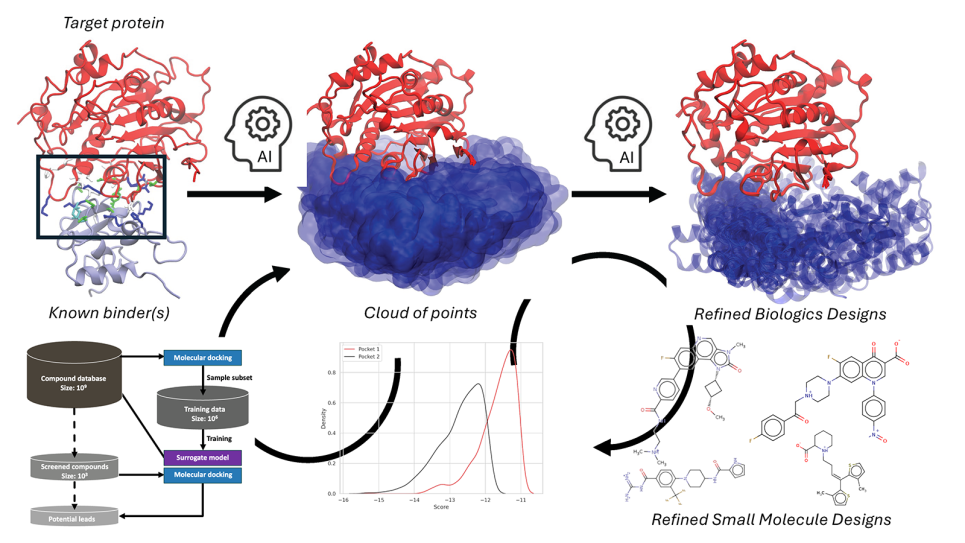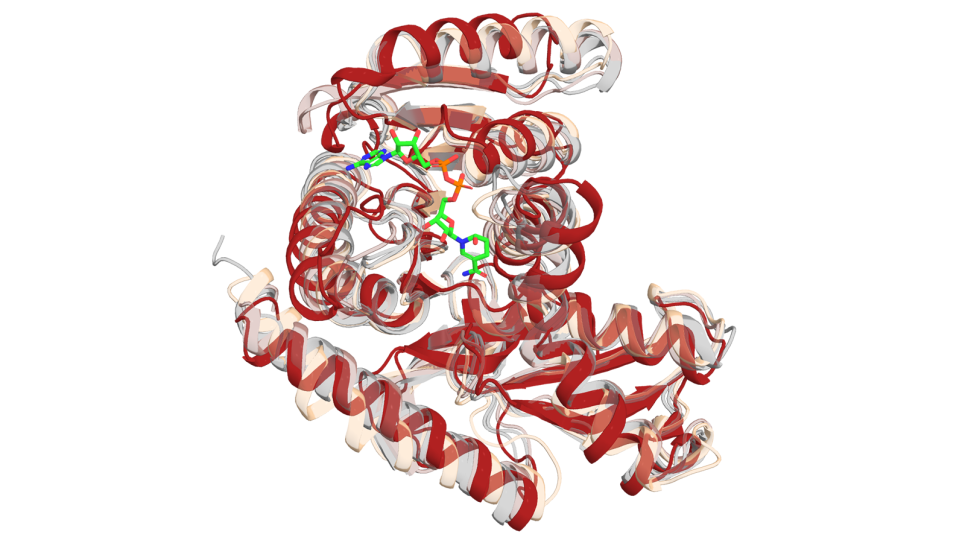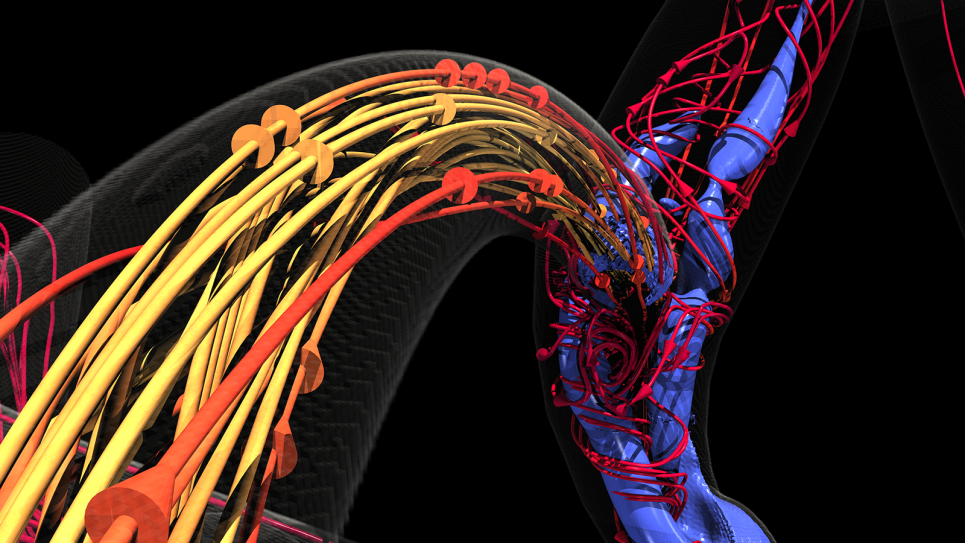
10 ways Argonne science is combatting COVID-19
Argonne scientists and research facilities have made a difference in the fight against COVID-19 in the year since the first gene sequence for the virus was published.
Sunday, Jan. 10, will mark one year since the first gene sequence for the virus that causes COVID-19 was published, igniting the quest for vaccines and treatments. Ten days later, the first case of the virus was confirmed in the United States. The U.S. Department of Energy’s (DOE) Argonne National Laboratory pivoted immediately to join the global fight against the pandemic, turning our powerful scientific facilities and world-leading researchers to the tasks of tracking, treating and helping stop the spread of the disease.
Here are 10 ways that Argonne scientists and research facilities made a difference in the fight against COVID-19 over the past year.
1. Speeding COVID-19 vaccine development
Scientists were able to develop COVID-19 vaccines in record time, and make them more effective, thanks to more than a decade of research on other viruses at Argonne’s Advanced Photon Source (APS). Five COVID-19 vaccines, including those approved by the FDA from Pfizer/BioNTech and Moderna, contain genetic mutations based on research conducted at the APS on vaccines for respiratory syncytial virus (RSV) and Middle East Respiratory Syndrome (MERS).
2. Determining the structure of the virus that causes COVID-19
Argonne scientists began identifying the structures of the proteins that make up the SARS-CoV-2 virus that causes COVID-19 as soon as its genetic sequence was released. Since then, more than 80 research teams from across the country have used over 11,000 hours of APS time to study the virus, determining more than 100 of the virus’s protein structures.
3. Creating the most detailed simulation of COVID-19 spread in Chicago
Argonne scientists created an innovative simulation of how COVID-19 spreads that has informed Chicago, Cook County and Illinois officials since early in the pandemic. The CityCOVID model uses artificial intelligence and the Argonne Leadership Computing Facility’s (ALCF) supercomputers to simulate the movement of millions of people as they go about their daily lives, predicting how COVID-19 will spread and the impact of preventative measures such as masks.
4. Developing reusable, anti-viral N95 masks
Argonne researchers working at the lab’s Materials Engineering Research Facility developed N95 protective masks that can be cleaned and reused. The team worked with the California-based Orbis electrical vehicle startup and the Donaldson Company filtration business in Minneapolis to develop a way to embed new antiviral polymers into fibers 1,500 times slimmer than a human hair to create an ultraresilient mask for medical professionals.
5. Advancing the search for COVID-19 drug treatments by examining the spike protein
Researchers used a combination of artificial intelligence and supercomputing resources, including those from the ALCF, to examine how the SARS-CoV-2 spike protein binds to and interacts with a receptor protein on human cells. This binding starts a cascade of events that allows the virus to infect the host. The data generated so far are providing new insights into how the spike protein changes its motions when it interacts with the receptor, advancing the search for drug treatments.
6. Learning how SARS-CoV-2 hides itself inside the body
Scientists from the University of Texas Health Science Center at San Antonio used the APS to discover that the SARS-CoV-2 virus uses some unique ways to camouflage its messenger ribonucleic acid (mRNA), the molecule that carries its genetic code, to mimic that of the host cell. The human immune system can’t differentiate it from the body’s own mRNA, so it doesn’t fight the virus off.
7. Studying antibodies from COVID-19 survivors
A research team led by scientists from the Fred Hutchinson Cancer Research Center in Seattle used the APS to examine an antibody from a COVID-19 survivor, gaining clear insights into how this potent antibody blocks the virus from entering cells. They discovered that the antibody not only prevents the virus from clinging to human cells, it actually causes parts of the spike protein that makes the virus-human cell connections to break off and fall away.
8. Investigating the most effective materials for homemade masks
University of Chicago researchers used Argonne’s Center for Nanoscale Materials (CNM) to identify which types of common cloth are most effective at preventing the spread of COVID-19. Findings indicate that the most effective combination of fabrics for homemade masks is a sheet of tightly woven cotton plus two sheets of chiffon, made from polyester and spandex.
9. Potentially changing how dexamethasone is prescribed for COVID-19
A research team led by scientists at the University of Virginia used the APS to study how the steroid dexamethasone, which can significantly reduce the chance of death from COVID-19, is transported throughout the body via a blood protein. Their finding, which demonstrated for the first time exactly how the blood protein binds with dexamethasone, may lead physicians to rethink how they prescribe the drug for certain COVID-19 patients, such as those with diabetes.
10. Supporting the largest comprehensive analysis of COVID-19 genome sequences in the United States
A collaboration of researchers from across the country used Argonne computing resources to analyze the genomes of over 5,000 strains of the virus sequenced by Houston Methodist Hospital over the course of five months. Their analysis helped solidify mounting observations and international concerns that a mutation in the virus had become dominant, driving rates of COVID-19 transmission.
The APS, ALCF, and CNM are DOE Office of Science User Facilities.
==========
About Argonne’s Center for Nanoscale Materials
The Center for Nanoscale Materials is one of the five DOE Nanoscale Science Research Centers, premier national user facilities for interdisciplinary research at the nanoscale supported by the DOE Office of Science. Together the NSRCs comprise a suite of complementary facilities that provide researchers with state-of-the-art capabilities to fabricate, process, characterize and model nanoscale materials, and constitute the largest infrastructure investment of the National Nanotechnology Initiative. The NSRCs are located at DOE’s Argonne, Brookhaven, Lawrence Berkeley, Oak Ridge, Sandia and Los Alamos National Laboratories. For more information about the DOE NSRCs, please visit https://science.osti.gov/User-Facilities/User-Facilities-at-a-Glance.
The Argonne Leadership Computing Facility provides supercomputing capabilities to the scientific and engineering community to advance fundamental discovery and understanding in a broad range of disciplines. Supported by the U.S. Department of Energy’s (DOE’s) Office of Science, Advanced Scientific Computing Research (ASCR) program, the ALCF is one of two DOE Leadership Computing Facilities in the nation dedicated to open science.
About the Advanced Photon Source
The U. S. Department of Energy Office of Science’s Advanced Photon Source (APS) at Argonne National Laboratory is one of the world’s most productive X-ray light source facilities. The APS provides high-brightness X-ray beams to a diverse community of researchers in materials science, chemistry, condensed matter physics, the life and environmental sciences, and applied research. These X-rays are ideally suited for explorations of materials and biological structures; elemental distribution; chemical, magnetic, electronic states; and a wide range of technologically important engineering systems from batteries to fuel injector sprays, all of which are the foundations of our nation’s economic, technological, and physical well-being. Each year, more than 5,000 researchers use the APS to produce over 2,000 publications detailing impactful discoveries, and solve more vital biological protein structures than users of any other X-ray light source research facility. APS scientists and engineers innovate technology that is at the heart of advancing accelerator and light-source operations. This includes the insertion devices that produce extreme-brightness X-rays prized by researchers, lenses that focus the X-rays down to a few nanometers, instrumentation that maximizes the way the X-rays interact with samples being studied, and software that gathers and manages the massive quantity of data resulting from discovery research at the APS.
This research used resources of the Advanced Photon Source, a U.S. DOE Office of Science User Facility operated for the DOE Office of Science by Argonne National Laboratory under Contract No. DE-AC02-06CH11357.
Argonne National Laboratory seeks solutions to pressing national problems in science and technology. The nation’s first national laboratory, Argonne conducts leading-edge basic and applied scientific research in virtually every scientific discipline. Argonne researchers work closely with researchers from hundreds of companies, universities, and federal, state and municipal agencies to help them solve their specific problems, advance America’s scientific leadership and prepare the nation for a better future. With employees from more than 60 nations, Argonne is managed by UChicago Argonne, LLC for the U.S. Department of Energy’s Office of Science.
The U.S. Department of Energy’s Office of Science is the single largest supporter of basic research in the physical sciences in the United States and is working to address some of the most pressing challenges of our time. For more information, visit https://energy.gov/science.


